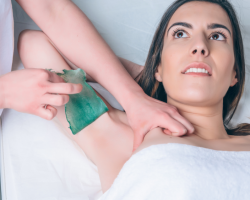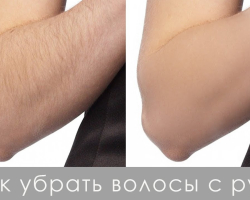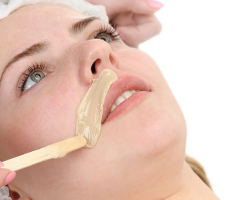Photoepilation is very popular among girls, but not everyone knows about its features, contraindications and possible consequences. We will talk about all this in our article.
Content
- Why photoepilation is so popular: advantages and disadvantages
- When you should not do photoepilation: contraindications
- Photoepilation - hair removal: views
- How to prepare for photoepilation?
- How photoepilation is carried out: features, effectiveness
- How often is photoepilation and how long is the effect for a long time?
- Can there be complications after photoepilation and which ones?
- Video: photoepilation of the house. Does this hurt? REVIEW.
Photoepilation is a cosmetological method of hair removal. The impact is carried out using high -impulse light. The procedure is similar to laser hair removal and contributes to the active generation of energy by melanin. This leads to the fact that hair follicles are destroyed and the hair becomes smaller. A great advantage of the procedure is the possibility of it for any girls, regardless of the type of skin and hair.
Since when photoepilation is an active effect of light, the devices are equipped with double filters to prevent burns.
Why photoepilation is so popular: advantages and disadvantages

Photoepilation, although it is a popular procedure, it has both advantages and disadvantages. Among the positive, they stand out:
- This method is highly effective because it affects follicles and destroys them
- You can carry out photoepilation on any parts of the body
- The effect lasts a long time, but if the procedure is done regularly, then gradually the hair will stop growing completely
- The equipment allows you to adjust the wavelength, so you can remove any, even deepest follicles
- No pain in the procedure appears
- The skin when bringing the procedure is not damaged, and filters do not allow burns to form
- The time is only 20 minutes, so it can be spent at any time

As you can see, there are plenty of advantages, but there are certain shortcomings:
- For light or gray hair, the procedure may be ineffective. This is due to the fact that the hair practically does not emit melanin or very little
- There is a lot of hair on the body and each is in different stages of growth. Therefore, after one session, it will not work to completely remove the hair
- Dark -skinned and tanned skin is especially sensitive to light, and therefore the procedure is carried out especially carefully for her
- After the procedure, burns or pigment spots may appear. This happens when the device is either faulty or incorrectly configured
- With active interaction with melanin, light pulses can lead to hyperpigmentation
- In rare cases, peeling of the skin is manifested
When you should not do photoepilation: contraindications

Despite the fact that photoepilation is suitable for any skin and hair, there are certain contraindications.
There are not very many of them, but they are worth knowing:
- First of all, the procedure cannot be carried out if other methods of hair removal have already been used on the spot. This does not apply to situations when simple shaving is carried out, but if you recently carried out shugarging, wax hair removal or laser removal, then with procedural time.
- If in the hair removal zone there are wounds or abrasions, as well as inflammation, then the procedure is contraindicated.
- After a long stay under the sun, the procedure is prohibited.
- In the presence of tattoos at the place of epilation, it is not recommended to influence this place.
- Steroids, as well as drugs that increase photosensitivity, as well as isotretinoin, are a contraindication, if you accept them.
- It is undesirable to carry out the procedure during pregnancy and lactation.
- If the body has electronic devices, such as a pacemaker or insulin pump, then in order to avoid failures, the procedure is not carried out.
- If in the past you had an allergy in the sun, SLE or Porfiry, then this does not allow the procedure.
Photoepilation - hair removal: views

To date, photoepilation is of different types. Each of them is characterized by efficiency and principle of influence.
- IPL Removement. This variety is the most popular. It is used in most salons and is based on the effects of light with heat rays. It destroys melanin in the hair. In order for the process to be painless, a cooling gel is used. On a similar principle, home and portable devices work.
- Elos. It translates as electron-optical synergy. It combines two methods - the effect of radio frequencies and light waves. This method is not used so often, because it is painful and complications often appear. Often, after using the method, women appeared in small scars or pigmentation.
- Lhe. Like IPL, this method implies the thermal and radial effects on melanin, but only the effect is not so strong. To get the desired result, more sessions are required. Despite this, the device works in a more gentle way.
- AFT. This is fluorescent hair removal. It is the most modern and effective. Thanks to her, her hair stops growing, and during the procedure there is no pain. It is also important to note that there are no unprocessed areas. It is no less important that after the procedure, complications are extremely rare, and less procedures are required to remove hair.
How to prepare for photoepilation?

Before going to the salon, a little preparation for the procedure is required. This is required in order to make the risk of complications minimal and get the desired effect.
- A month before the procedure, remove the hair exclusively with a razor. If you use other hardware methods, then photoepilation will be prohibited.
- A couple of days before the procedure, you can shave hair in the right area. You can’t do this later, because for photoepilation, the length of the hair should be from 2 mm.
- Stop coming to the beach or solarium two weeks before the procedure. This is due to the fact that tanned skin is more sensitive to heat and as a result a burn may appear.
- Do not use creams and other skin products before visiting the salon.
- If you take tranquilizers or antibiotics, then first go through the entire course and in a couple of weeks you can go to the procedure.
How photoepilation is carried out: features, effectiveness

- When the preparation is completed at home, then everything does not end there. Already directly in the cabin you should inspect the dermatologist and make sure that everything is in order with the skin. Using special devices, he will determine which parameters of light waves can be used, and also tells how the procedure will take place and what the consequences can be.
- When a dermatologist permits the procedure, you can go to the session.
- Once in the office, you are held on a chair where you will need to put on the glasses from the sun and expose the required area.
- The cosmetologist will draw a special gel to protect the skin from light and prevent burns.
- After that, the manipulator begins to work over the entire surface. The whole procedure ends in 5-10 minutes.
- The doctor will remove the gel and apply the cream on the skin.
During all manipulations, only the movements of the manipulator are felt. However, if hair removal is done in the bikini zone, then tingling or burning can be felt. To eliminate such sensations, the gaps between the outbreaks are made more, and patients are recommended to breathe deeply.
How often is photoepilation and how long is the effect for a long time?

The effectiveness of photoepilation is very high and after the first session, 30% of the hair is eliminated. After 5-6 procedures, the skin becomes absolutely smooth and delicate. How long the effect will be depends on different factors:
- Qualification of a cosmetologist
- How correctly the wavelength is determined and the depth of its penetration
- How modern devices are used
- Does the patient have hormonal imbalance
On average, the procedure is usually enough for a gap of six months to five years. On the arms and legs, the hair does not grow longer, and on the face it will require a re-conduct of the procedure after 7-8 months.
Immediately after the procedure, you are unlikely to notice the effect, although, as we have already said 30% of the hair is removed. You can see it in about a week. To achieve a good effect, 4-10 procedures will be required. That is how much is required to get a good result.
A specific number of procedures depends on your individual characteristics. For example, people with fair skin and hair need fewer procedures, and dark -haired with dark -skinned skin - more.
Can there be complications after photoepilation and which ones?

If the procedure is carried out in violation of the norms, then this can lead to very unpleasant consequences. As a rule, this happens if the cosmetologist negligently refers to his work, he has insufficient qualifications or you yourself reacted carelessly to the procedure.
Immediately after the procedure, small edema and light redness in places of exposure to light may occur, but this is a normal reaction and you should not worry about this. The skin will become normal for a week.
As for complications, the following consequences may arise:
- Burns. If the beam power is too high, then burns can occur. The same can be the same if the rule is violated for the ban on sunbathing before the procedure.
- Pigmentation. It occurs due to a skin of the skin.
- Keloid scars. If your skin is prone to their appearance, then immediately after the procedure they may appear.
- Allergy and itching. As a rule, this does not arise from the apparatus itself, but from the gel it can be. So if you do not tolerate any components of the gel, then it is better to immediately say from it.
- Hair growing. If such problems have begun to appear, then this is to blame for the master, because such skin behavior can only indicate the wrong procedure. As a rule, the point is the wrong settings of the device.
So that you do not have to suffer from possible complications, carefully choose the clinic and study reviews about it. In addition, think well what the consequences of the procedure may be. Despite the fact that excess hair still interferes, there are more gentle methods of hair removal, for example, special creams. Let the effect of them not so long, but hair growth still slows down, and they are also removed.







